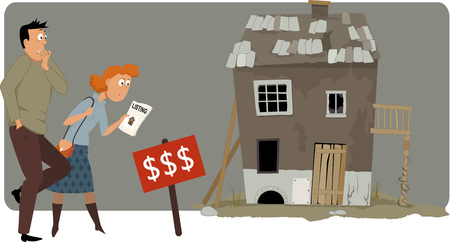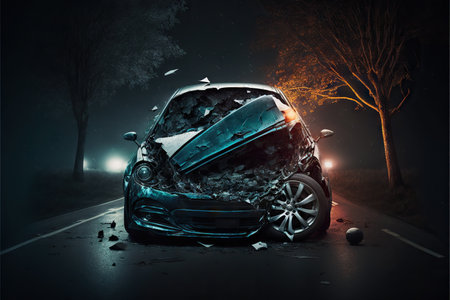Understanding No Claims Discount (NCD)
No Claims Discount, often referred to as NCD or no claims bonus, is a key factor in how much you pay for your car insurance in the UK. Simply put, it’s a reward system offered by insurers: for every year you drive without making a claim on your car insurance, you earn a year of NCD. The more consecutive years you build up, the bigger the discount you’ll see on your premiums. This can make a real difference to your wallet, as drivers with several years of no claims history often enjoy significant savings compared to those who have recently claimed. In short, NCD acts as proof of your safe driving record and is highly valued by insurers when calculating your renewal price. Protecting your NCD can help keep your insurance costs down year after year, so understanding how it works—and what could affect it after an accident—is crucial for all UK motorists.
2. What Happens to Your NCD After an Accident
When you’re involved in a car accident in the UK, what happens to your No Claims Discount (NCD) can depend on several factors, such as who was at fault and whether your insurer has paid out for any damages or losses. Generally, if you make a claim where you’re considered at fault, or if the blame is split, most UK insurers will reduce your NCD when you renew your policy. Even if the accident wasn’t your fault, but the other party can’t be identified or traced (for example, in a hit-and-run), your NCD might still be affected because your insurer cannot recover their costs.
Here’s a summary of typical outcomes:
| Situation | Impact on NCD |
|---|---|
| Fault claim (you caused the accident) | NCD usually reduced by 2 years or more |
| Non-fault claim (other driver admits full responsibility and their insurer pays up) | No effect on NCD, provided your insurer recovers all costs |
| Split liability (both parties share blame) | NCD likely reduced |
| Uninsured/untraced driver (e.g. hit-and-run) | NCD may be reduced if costs not recovered |
In plain English: If your insurer has to pay out and can’t get their money back from someone else, it’ll almost certainly cost you some or all of your hard-earned No Claims Discount. Each insurer has slightly different rules, but losing two years off your discount after a single claim is fairly standard across the UK market.

3. At-Fault vs. Non-Fault Claims: The Impact on Your NCD
Understanding the difference between an at-fault and a non-fault claim is crucial when it comes to how your No Claims Discount (NCD) is affected after an accident in the UK. Simply put, an at-fault claim means your insurer has paid out for damage or injury caused by you, even if the incident wasn’t entirely your fault. This includes situations where responsibility can’t be pinned on another party, or where the other driver cannot be traced—think of hit-and-run scenarios. On the other hand, a non-fault claim occurs when your insurer recovers all costs from the party responsible for the accident. For example, if someone hits your parked car and admits liability, and their insurer covers your repairs, this would be considered a non-fault claim.
In most cases, making an at-fault claim will result in your NCD being reduced at your next renewal, unless you have protected no claims bonus cover in place. Typically, insurers reduce your NCD by a set number of years per claim—often two or more years lost for one at-fault incident. In contrast, a non-fault claim usually leaves your NCD untouched, as long as your insurer successfully recoups all expenses from the other party’s insurance provider. However, it’s worth noting that even non-fault claims can sometimes influence your premium, as insurers may consider you statistically more likely to make a future claim.
To summarise, whether an accident is classed as at-fault or non-fault plays a key role in what happens to your No Claims Discount. Always check with your insurer how they handle each type of claim and what impact it may have on your discount moving forward.
4. How Much NCD Will You Lose After a Claim?
If you need to make a claim following an accident, you might be wondering exactly how much of your No Claims Discount (NCD) you’ll lose. The amount depends on your insurer’s specific rules, but there are some common patterns across the UK. Generally, making a claim will result in your NCD being reduced by a certain number of years or by a set percentage.
Typical Reductions in No Claims Discount
Insurers usually measure your NCD in years, with each year representing a bigger discount off your renewal premium. If you have an “unprotected” NCD and make a claim, most insurers will knock off two or more years from your total. For example, if you had five years’ NCD before the accident, you might drop down to three years after making one at-fault claim.
| Years of NCD Before Claim | Years Lost After One Claim | Years of NCD Remaining |
|---|---|---|
| 5 | 2 | 3 |
| 4 | 2 | 2 |
| 3 | 2 | 1 |
| 2 | 2 | 0 |
| 1 | 1 | 0 |
NCD Percentage Reductions: A Typical Example
Your NCD translates into a percentage off your premium. Here’s how this can look with a typical insurer in the UK:
| NCD Years Before Claim | % Discount Off Premium (Before) | % Discount Off Premium (After) |
|---|---|---|
| 5+ | 60% | 40% |
| 4 | 50% | 30% |
| 3 | 40% | 20% |
| 2 or less | 30% or less | No Discount |
A Real-World UK Example:
If you’re insured with Admiral and have six years’ NCD, making one at-fault claim could reduce this to three years, meaning your renewal discount would drop significantly. Other major UK insurers like Direct Line or Aviva have similar rules—generally, the more claims you make, the steeper the loss of your NCD.
This reduction applies whether it’s a fault or non-fault claim if your insurer can’t recover their costs from another party. Always check your policy booklet for the precise rules that apply to your cover, as some companies may differ slightly in their approach.
5. NCD Protection: What It Is and How It Works
No Claims Discount (NCD) protection is an optional add-on to your car insurance policy in the UK, designed to help you keep your hard-earned discount even if you need to make a claim following an accident. Here’s how it works in practice:
What Is NCD Protection?
NCD protection allows you to make a certain number of claims—usually one or two within a set period—without losing your no claims discount. Essentially, it acts as a safety net, so a single mishap doesn’t wipe out the discount you’ve built up over the years. This can be especially helpful for drivers who have accumulated many years of claim-free driving and want to safeguard their lower premiums.
How Does It Benefit Policyholders?
The main benefit is peace of mind. With NCD protection, if you have an accident and need to claim, your insurer won’t immediately reduce your discount at renewal time, meaning your premium is less likely to jump significantly due to one-off incidents. It’s particularly popular among experienced drivers who want to maintain as low a premium as possible.
Limitations According to UK Insurance Norms
It’s important to understand that NCD protection isn’t a guarantee your premium won’t rise after an accident—it simply means your no claims discount itself remains intact. Insurers may still increase your base premium because you are now considered a higher risk, even though your percentage discount stays the same. Additionally, there are limits on how many claims you can make before the protection no longer applies—typically one claim per year or two in three years, but this varies between insurers. Always check your policy wording for specifics.
In Summary
NCD protection is a valuable tool for keeping your discounts safe after an accident, but it isn’t foolproof or absolute. Understanding its benefits and limitations helps ensure there are no nasty surprises when it comes time to renew your policy.
6. Restoring Your NCD After Losing It
Losing your No Claims Discount (NCD) after an accident can be disappointing, but it’s not the end of the road for UK drivers. There are several practical steps you can take to rebuild or restore your NCD over time. Here’s what you need to know:
Wait and Rebuild
The simplest way to regain your NCD is by driving claim-free for a set number of years. Each year you don’t make a claim, you’ll earn another year’s worth of discount, gradually working your way back up.
Switching Insurers
If you’re unhappy with your current insurer after losing your NCD, shopping around when your renewal comes up can be wise. Different insurers may offer better introductory rates or consider partial discounts for claim-free years earned before your accident.
Consider NCD Protection
When rebuilding, you might want to add No Claims Discount protection to your policy. This optional extra allows you to make a certain number of claims without losing all of your NCD in the future—though it usually costs more.
Ask About Partial Retention
Some insurers allow you to retain part of your NCD after a single claim, especially if you had many years built up beforehand. Always ask if this applies to you—it might mean a smaller step back instead of starting from scratch.
Provide Proof of Previous NCD
If you’ve recently switched insurers or had a gap in coverage, dig out old policy documents or contact previous providers for proof of your NCD. Some companies may honour past discounts if you provide evidence.
Drive Carefully and Avoid Further Claims
The most effective way to restore your NCD is to avoid further incidents. Practice safe driving habits, keep an eye on road conditions, and follow the Highway Code closely.
Summary
Regaining your No Claims Discount after an accident takes patience and careful driving, but it is achievable. By staying claim-free, exploring options with different insurers, and considering protection extras, UK motorists can work their way back to substantial savings on their car insurance premiums.


